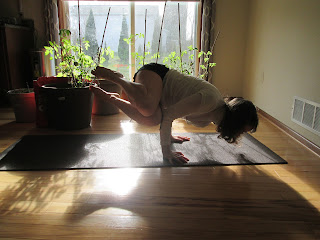How does yoga help athletes?
The training of athletes is multi-dimensional. Confidence in sports relies on various factors, including physical skills, training, cognitive efficiency and resilience (1).
The benefits of yoga for athletes
are holistic in nature and integrate various crucial aspects of their training.
Meditation is known to increase the
thickness of the hippocampus (2). This area of the brain is involved in
emotional regulation, cognition and resiliency. The Sun Salutations, also known
as Surya Namascar, help to develop muscle strength and improve fitness (3 and
4). They also have the potential to help athletes gain a state of mental
calmness and clarity that can boost their performance. In addition to improving
physical strength and endurance (4), Sun Salutations have been shown to
decrease stress and negative emotions.
Research has found that yoga
improves lung capacity and respiratory function (5), and the American Heart
Association acknowledged that yoga supports cardiovascular health by reducing
stress and helping to regulate blood pressure (6). Yoga helps to reduce blood
pressure in people with hypertension. I explored the research on this in a
previous entry (7).
Considering the benefits that a
regular yoga practice can offer, athletes may choose to use yoga as a valuable
tool to gain confidence and refine their performance.
Objective measures can be researched
to understand how yoga can impact an athlete's fitness when added to their training.
A study published by the International Yoga Journal did just that (8). The two
groups of college athletes compared had their regular routine training, but
only one group (the Yoga Group) had the yoga sessions added twice a week for a
period of ten weeks to test the hypothesis on whether yoga was able to improve
measures of balance, flexibility and joint angle measures.
The participants of this study had
no prior yoga experience. The tests of flexibility, balance and joint angle
measures were done before the yoga sessions were added to their training, and
then they were repeated ten weeks later. The expectation was that both groups
would improve their flexibility since both the Yoga and the Non-Yoga Groups
participated in stretching exercises. However, only the Yoga Group improved the
tests of flexibility whereas the Non-Yoga Group did not improve and in some
cases the flexibility even declined (8). Furthermore, the balance was also
better after the ten weeks of training in the Yoga Group. On the other hand,
the Non-Yoga Group had no changes in their balance. This small study was able
to demonstrate that adding yoga to their regular training also had a positive
impact on their balance.
Certified yoga instructors with knowledge about anatomy and physiology can make the practice effective and safe, and can help athletes to accomplish their goals.
As a mind-body practice, yoga has the potential to boost athletes' performance on multiple levels by enhancing various components of fitness.
References:
1) https://pubmed.ncbi.nlm.nih.gov/27086937/
2) https://www.ncbi.nlm.nih.gov/pmc/articles/PMC3004979/
3) https://pubmed.ncbi.nlm.nih.gov/25558129/
4) https://www.ncbi.nlm.nih.gov/pmc/articles/PMC3289222/
5) https://www.ncbi.nlm.nih.gov/pmc/articles/PMC4097903/
7) https://pubmed.ncbi.nlm.nih.gov/30792067/
8) https://www.ncbi.nlm.nih.gov/pmc/articles/PMC4728955/


